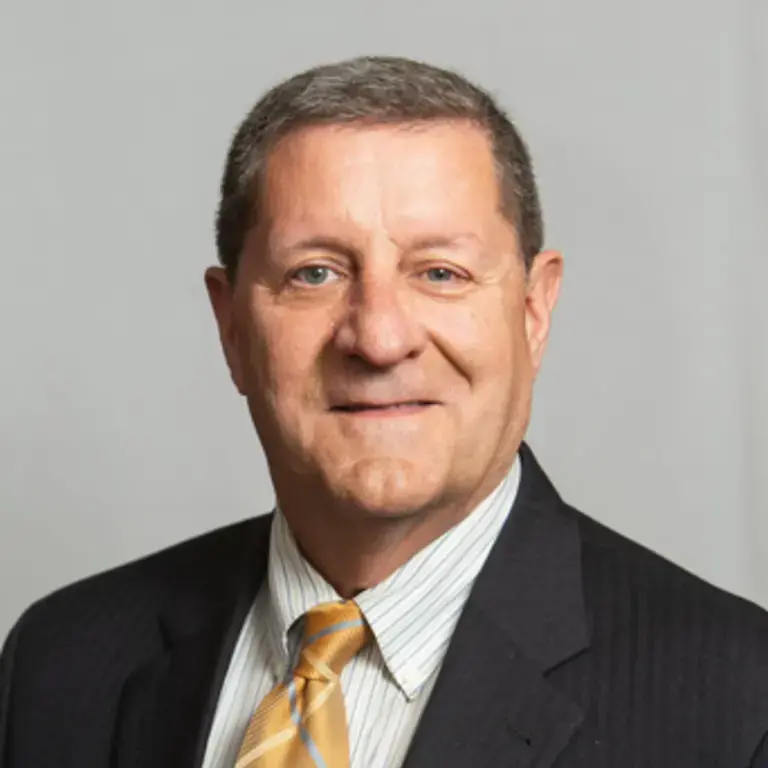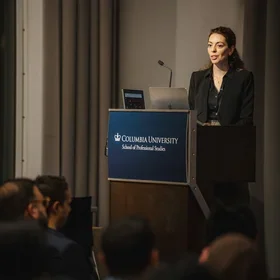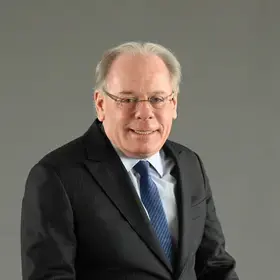By John Parkinson, Program Director and Lecturer in Discipline, Construction Administration
One of the essential components of the Columbia Construction Administration experience is helping our students recognize just how much they have a hand in changing people’s lives. This is accomplished in part by taking a close look at the built environment, beyond the buildings themselves, up close and personal, as members of the very communities where their impacts can be felt.
In the Construction Capstone, students take a deep dive into some of the tougher issues that they will face outside of campus. As with many other programs across the School of Professional Studies, capstone curricula encourage students to incorporate essential topics such as diversity, equity, inclusion, and accessibility into their projects.
Thanks to the Faculty-Student Engagement Fund’s generosity, Construction Administration students in the Fall 2023 semester’s capstone were treated to a copy of The Power Broker, Robert Caro’s Pulitzer Prize-winning biography of influential urban planner Robert Moses.
Including Robert Moses as a centerpiece of our conversations and classroom discussions brought to light all that the last master builder in the modern era had done for New York in his day and has done to the New York of today. One need only to take in the views from one of Columbia’s latest construction projects to see some of the ways in which Black families, immigrant neighborhoods, and socioeconomically disadvantaged communities were adversely affected, and disproportionately so, by Robert Moses’s construction plans and projects.
Below, four Construction Administration students reflect on their experiences visiting the in-progress housing project, affectionately referred to as Site Zero, as part of the Manhattanville campus development.
Lewis B. Reddick, Jr., CACM
Founder/Managing Principal, Construction-Domain
"Words in The Power Broker were brought to life during our class site visit to Columbia's graduate student housing construction complex located at the corner of 125th Street and Broadway in Manhattanville. I recall standing on a rooftop terrace level, enjoying the feeling of the blowing wind while taking in the view. In that moment, my eyes settled on a New York City Housing Authority (NYCHA) complex, and I was reminded of words credited to Robert Moses: “I raise my stein to the builder who can remove ghettos without removing people as I hail the chef who can make omelets without breaking eggs.”
As I stood on the terrace with eyes firmly fixed on the NYCHA campus, I thought, is it just me, or should the humanity of people and sanctity of personhood never be compared to eggs? People aren't eggs. We just aren't.
I could only think of what life was like on the other side of the railroad tracks in each of those NYCHA homes. For a moment, I stood in a space at the intersection of a magnificently constructed building and a noticeable void in the adjacent community. I wondered if the gap would sincerely ever be bridged. I'm hopeful."
Allegra Vanderlaan
Co-President, Construction Administration Student Association
Project Manager, NYC Economic Development Corporation
"From the 35th floor terrace of the newly constructed Columbia graduate student housing building on 125th Street and Broadway, our capstone class could see all five boroughs of New York, a spread of glittering lights in the early evening.
Look to the far south, and you could see One World Trade Center, the iconic symbol of resilience. Look to the east, and you could see planes taking off from the recently transformed LaGuardia Airport. To the west was Hudson Yards, the largest private development in U.S. history, and the source of many conversations around land value capture and safety programs on megaprojects.
And to the north was the George Washington Bridge, where traffic flows to and from the Cross Bronx Expressway. In our capstone course, we read about the destructive impacts of this road on communities in the Bronx, and there it was still in front of us almost 70 years later. It was a reminder that not all construction was good construction, and that it will be our responsibility to build equitably for the present and future."

Construction Administration students an in-progress housing project as part of their Construction Capstone, seeing firsthand how neighborhoods and communities were affected by Robert Moses’s construction plans and projects.
Kishan Patel
VP of Clinical Operations, Harlem Medical Group
"The capstone course allowed our Construction Administration cohort to understand the challenges and lessons from the past that can be improved and applied for a better future.
We were influenced by the real life lessons, ranging from creating megaprojects to extreme infrastructure changes, as taught by Professor La-Verna Fountain and John Parkinson, who both brought vast amounts of experience.
The proper use of power provided to an individual can make or break a city. In this case it caused a major change in development."
Rosalie Polanco
Diversity Associate, The New Terminal One (NTO) redevelopment project at JFK Airport
Co-President, Construction Administration Student Association
"From the very first class, professors John Parkinson and La-Verna Fountain facilitated thought-provoking conversations that guided us to dig deep foundations of purpose and meaning for our capstone projects.
In one of our most memorable and out-of-the-box activities, we were asked to build upon our professional introductions by sharing the meanings of our names. I experienced both déjà vu and an epiphany as I shared that Rosalie to me meant hustle, because it was once my mothers alias for a working permit after immigrating to the Bronx from the Dominican Republic in the early ’80s.
I flashed back to stories of her first impressions of our new home, a neighborhood that only 10 years prior to her arrival was razed by Robert Moses to make way for the Cross Bronx Expressway. In that moment, defining my name became synonymous with defining my role as a change agent in construction, but it wasn't until delving into Moses’s biography, The Power Broker, that I hit the bedrock of my capstone."
About the Program
Columbia’s Master of Science in Construction Administration program prepares graduates for a variety of careers at the forefront of construction and project leadership. Graduates develop rewarding careers with some of the world's most respected architecture, engineering, and construction firms, entrusted with delivering some of the most impactful projects of our time.



